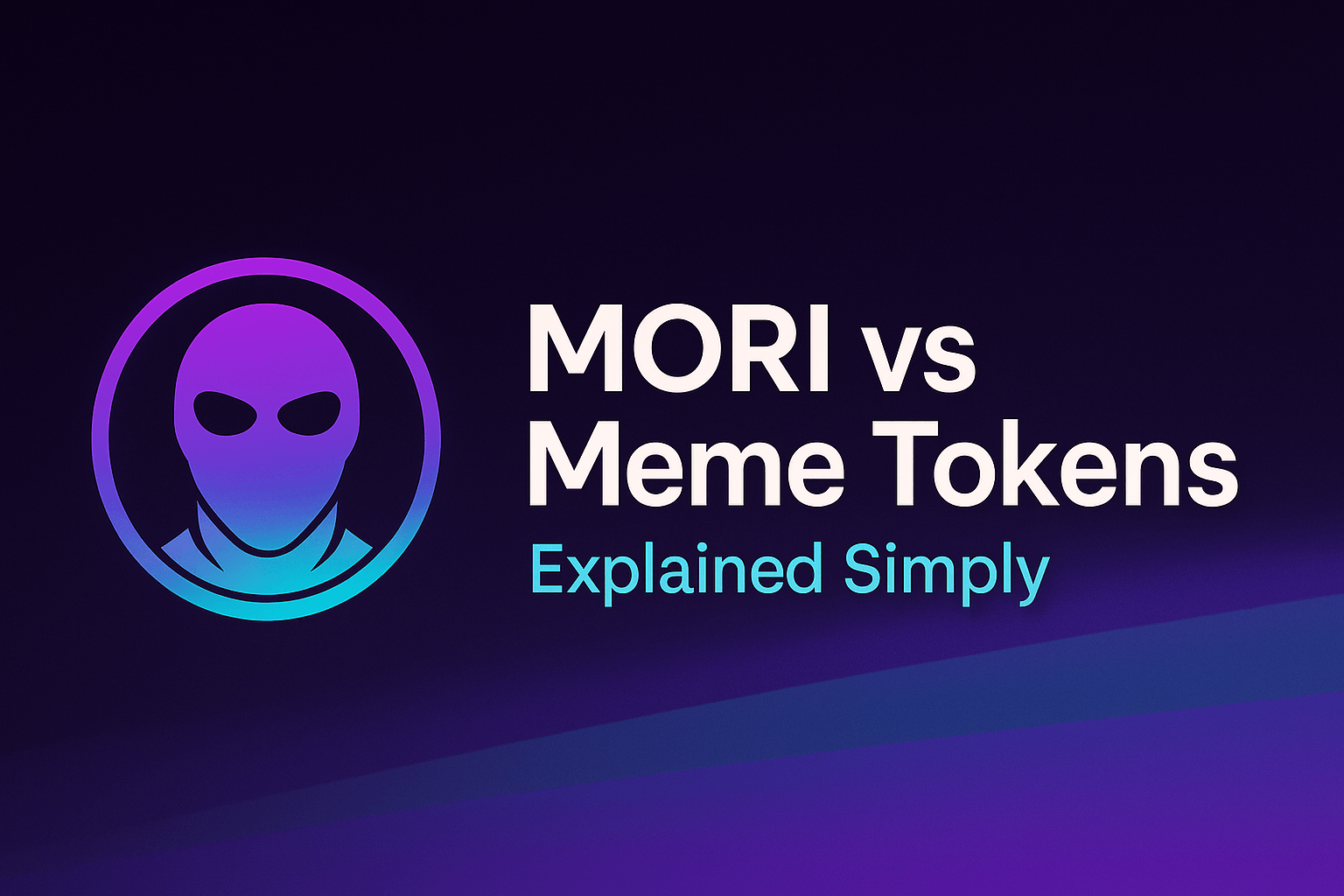MORI vs Meme Tokens — Explained Simply

What is MORI and how it differs from meme tokens — explained simply
MORI is a crypto project and the namesake token $MORI. The idea is not just “a meme for the sake of hype” but a clear pipeline: media → products → on‑chain actions.
What MORI is — in brief
MORI is a brand and a community built around the $MORI token. The project bets on a low barrier to entry on Solana (low fees, fast confirmations) and on products you can already touch or that are nearing release.
Put simply, MORI is a meme brand that guides people toward real token use: holding, staking, and taking part in activities and services.
What the $MORI token is for
- Staking. A launched rewards mechanism with fixed terms (1/3/6/12 months). Rewards are paid on withdrawal; early exit is possible with a penalty.
- Gaming scenarios (in development). An on‑chain casino where you play only with $MORI, with a rake model and partial burn of turnover.
- Service access (in development). MORI VPN with a focus on privacy and robust connection modes; access tied to holding the token.
Media and community as demand drivers. Reality formats and offline/online events attract new audiences and convert attention into on‑chain actions.
The idea is simple: the more scenarios, the more reasons to hold and use $MORI.
How MORI differs from typical meme coins
- Strategy: “meme + utility.” Many meme tokens add products afterwards. For MORI, products are part of the plan: staking is already live; casino, VPN and show formats are in release/pre‑release stages.
- Low barrier to entry. Solana, Phantom/Solflare wallets and a swap via Jupiter are, as a rule, fast and inexpensive (low fees), without a “gas quest.”
- Content as a system. Not random tweets but regular formats: clips, shows, UGC contests, raids. There is a managed path from reach to wallet installs and on‑chain actions.
- Demand economics. Part is already in use (staking), the rest is announced for launch (gaming/access). This adds user demand to purely speculative demand.
Community & communications
- The Telegram forum counts about 40,000 participants (as of publication) — a notable engagement level for a young project.
- There are separate chats for holders and “whales” where the team tests mechanics and collects feedback.
- International expansion is supported via official channels and media content.
In practice, the community is active: people discuss, vote, show up at events and help refine products.
Risks & what to watch
- Execution. Announced products need to ship and be used. Look for facts of releases, not just announcements.
- Regulation. Casino and VPN come with licensing/compliance requirements; assess licenses, access conditions and transparency.
- Liquidity. DEX is a convenient start, but the broader audience cares about spot pairs on CEX and market depth.
- Marketing dependence. It’s better when traffic sources are diversified and not tied to a single face.
- Verification metrics. On‑chain activity (number of holders, swap volumes in Solana pools), liquidity depth on DEX/CEX, and the cadence of real releases.
Conclusion
MORI is an attempt to bring meme and utility under one roof. Staking already gives the token a use, while gaming and service scenarios broaden the funnel. If the team keeps shipping and supporting the community, the project has a chance to stick not as a flash in the pan but as an ecosystem around $MORI.
